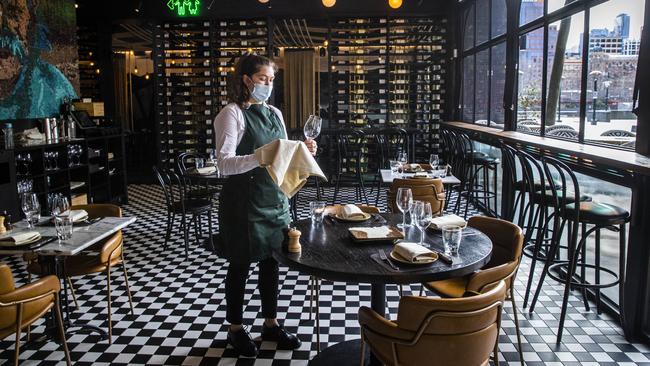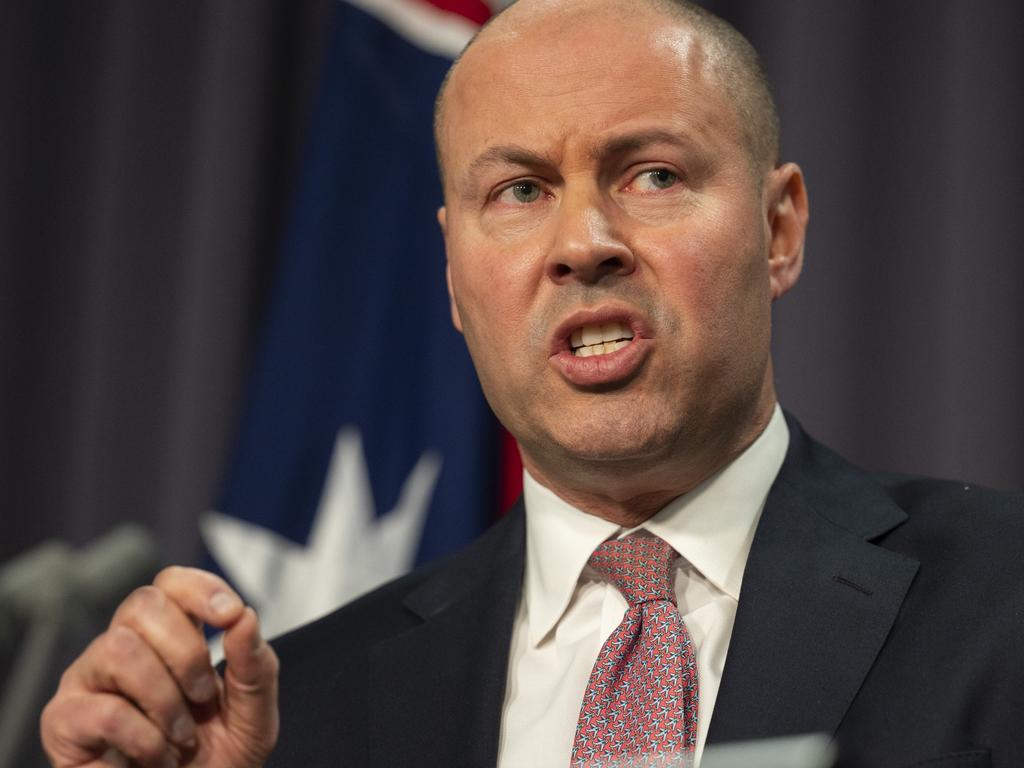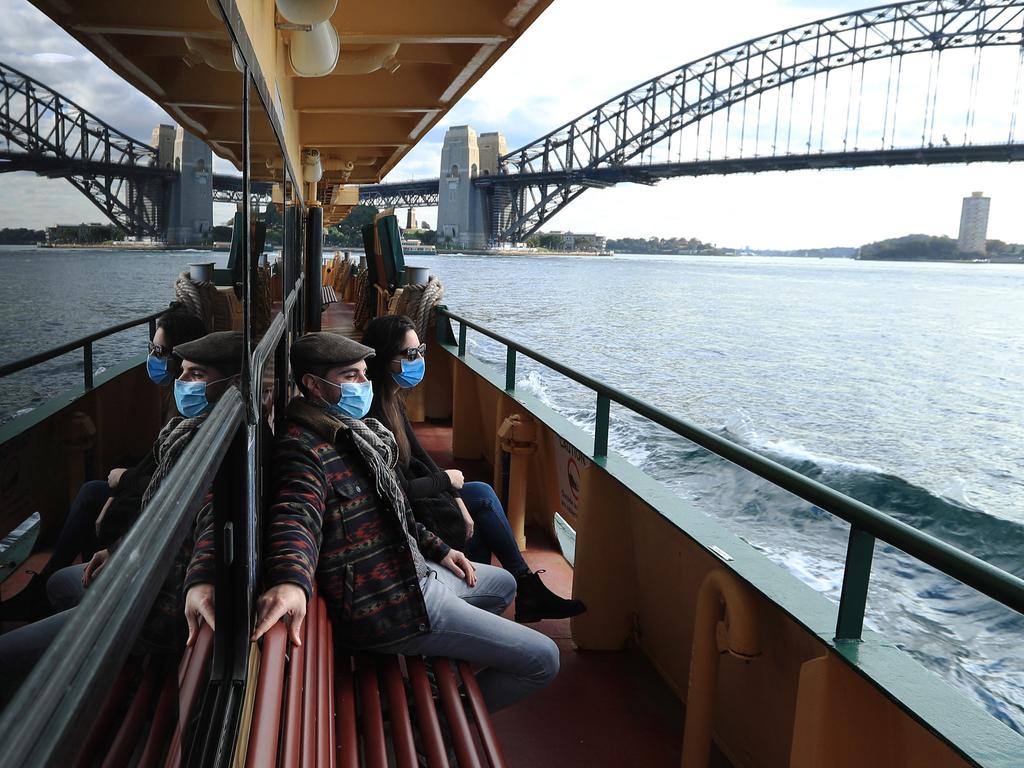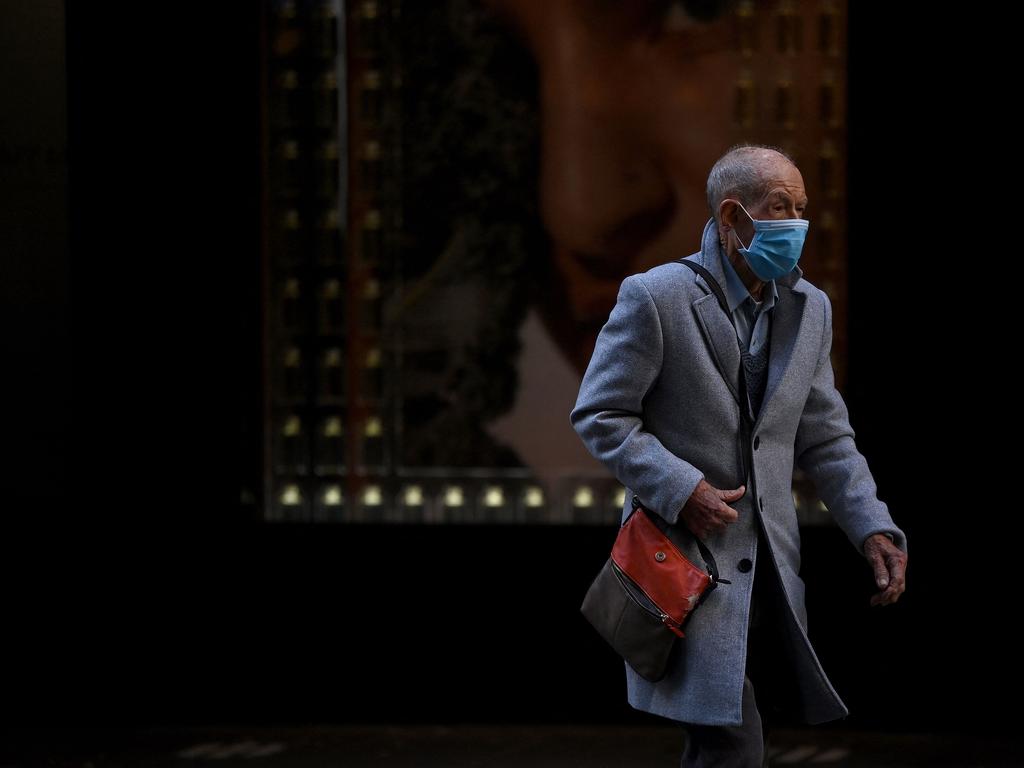Coronavirus: Food for fraught, after year from hell in Melbourne
A year to the day since Melbourne went into its longest lockdown the city’s usually buzzing entertainment precinct still stands largely empty.

A year to the day since Melbourne was ordered into its longest Covid-19 lockdown – ultimately lasting four months – the city’s usually buzzing entertainment precinct still stands largely empty.
Southbank’s once bustling restaurants and bars are eerily quiet. The customers have stayed away, as a trickle of lockdowns and mask requirements have kept CBD workers at home.
The anniversary of the Victorian government’s lockdown announcement came as NSW Premier Gladys Berejiklian ordered a seven-day extension of Greater Sydney’s own lockdown – and perhaps stricter restrictions still in parts of the city’s southwest.
Business figures and economists warn these dramatic government interventions could have debilitating and confidence-sapping effects long after they end.
Despite a month passing since the end of Melbourne’s most recent lockdown, and workers being allowed back to the office, attendance at CBD offices remains low.
In June, it hit just 26 per cent of pre-pandemic levels, after recovering to 45 per cent in May, according to the Property Council.
Public transport use has also slumped, now at just 34 per cent of pre-pandemic levels. And data compiled by the City of Melbourne shows that pedestrian foot traffic is also down at about 62 per cent on weekdays.
Ollie Gould, the executive chef at Southbank restaurant Asado, went from serving 80 diners during the pre-pandemic lunch rush to as few as 10 in recent weeks.
“Big groups we may have had from the corporate world previously … there are certainly fewer of them based on them not wanting to have the whole office sitting together,” he said.
“Yes, it’s a pessimistic view still in Melbourne at the moment, Covid’s still here and an outbreak could happen at any time.”
At corporate lunch favourite Treviso on Bank Place, owner James Valentini said before the pandemic the restaurant would serve between 150 to 200 people a day. On Monday, he served 32.
Belluno in Docklands, which he also owns, has not traded since March 16 last year.
Mr Valentini said rules on masks had been an incredible disincentive to office workers returning to the CBD and his confidence had been shattered when the state entered its fourth lockdown.
“The realisation there was no additional sophistication in how the authorities in Victoria have handled lockdown was really most upsetting – perhaps the word is ‘terrifying’,” he said.
AMP Capital chief economist Shane Oliver is optimistic Sydney won’t follow Melbourne’s path. He said the Sydney lockdown would cost about $1bn in lost economic activity each week, but added that Melbourne’s 111-day lockdown last year had left psychological and economic scars on the Victorian capital.
“Once you put businesses through a four-month lockdown, they don’t know whether they are ever going to reopen again – that would have created an impact,” he said.
“It probably won’t happen in NSW as the lockdown is not as severe … people who want to go to the shops to buy a jumper, they can still do that.”
The Victorian government has confirmed further easings from Friday, meaning that office workers can ditch their masks and relaxed density limits will apply to businesses and entertainment venues. But business confidence has been left in tatters after more than a year of disruptions and uncertainty.
KPMG head of restructuring James Stewart said many Melbourne business owners had already spent their last dollar trying to save their livelihoods.
“I think the fourth one (lockdown), even though that was only for a relatively short period of time, I think for some people it just created such uncertainty in their mind about their ability to rebuild their lives or build their businesses,” he said.
“So I do think there’s a confidence issue.”
Property Council of Australia acting NSW chief executive Lauren Conceicao said she doubted Sydney’s CBD would go the way of Melbourne, given NSW had spent more than 13 months between successive lockdowns.
“We certainly haven’t had the same length of lockdown as Melbourne and the recurrent challenges,” she said.
“I think there’s credit for the NSW government in resisting rolling lockdowns because that does take a mental toll.”
At a Melbourne Press Club lunch on Wednesday, Victorian Chamber of Commerce and Industry chief executive Paul Guerra said the state’s businesses had been in crisis for 14 months. “We are one outbreak away from the next lockdown, and that’s not lost on any business leader; it’s not lost on any worker in the state,” he said.
From 11.59pm on Thursday, density limits in Melbourne will be relaxed to 2sq m in indoor venues and office workers will no longer be required to wear masks indoors. Mr Guerra said this would be the first time in six-weeks that businesses would be able to trade viably.







To join the conversation, please log in. Don't have an account? Register
Join the conversation, you are commenting as Logout